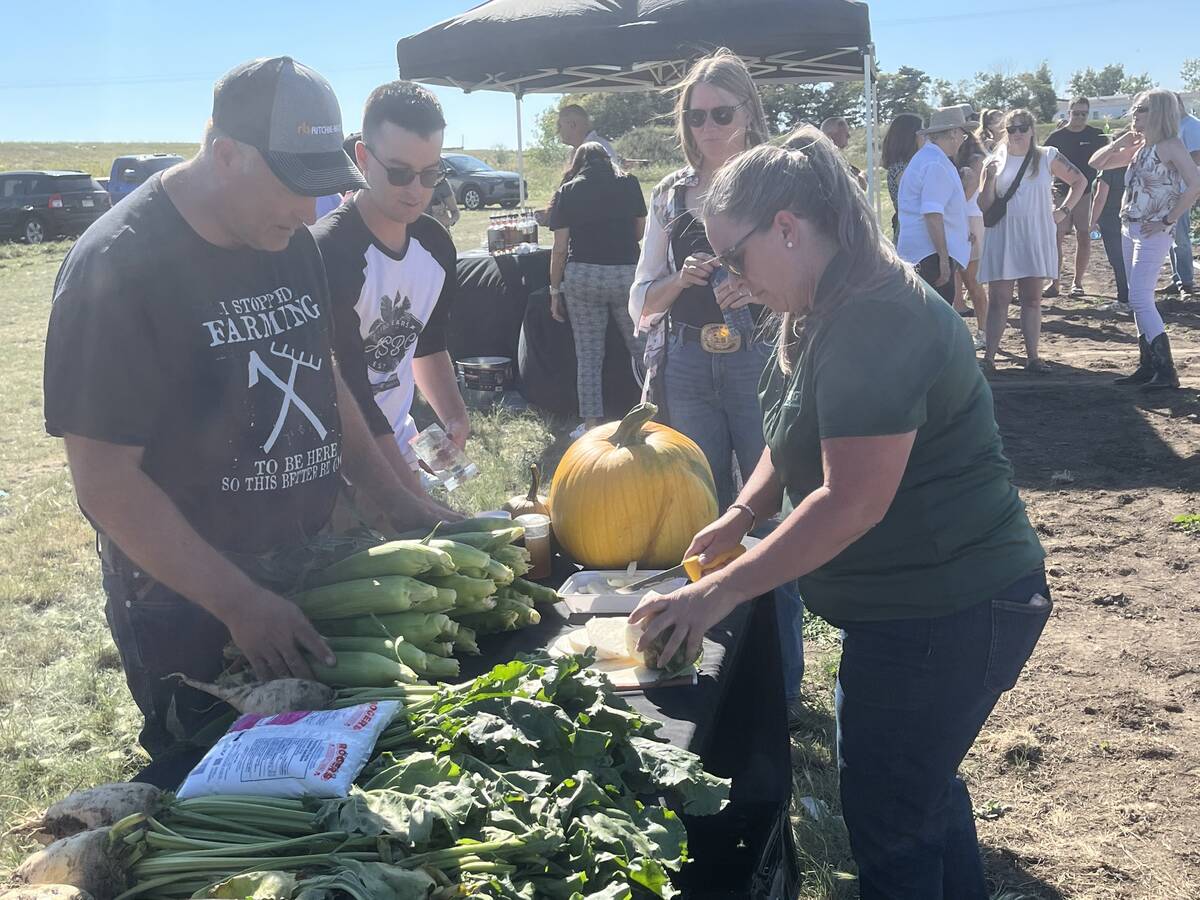Eastern Man. is in particularly bad shape, Sask. faces a below average hay crop and Alta. has had a second dry year
Cattle producers across the Prairies are dealing with poor hay crops, crispy pastures and dwindling feed supplies.
A combination of late spring feeding, heat and dry conditions have put next winter’s feed supply in jeopardy in many parts of the region. Carryover has largely been used up, and little growth has occurred.
“The eastern part of the province is in pretty rough shape,” said Manitoba Beef Producers president Ben Fox.
“Producers are short on pastures and hay, and they’re hoping for an extended fall.”
Read Also

Alberta farm lives up to corn capital reputation
Farm to Table Tour highlighting to consumers where their food comes from features Molnar Farms which grows a large variety of market fruits and vegetables including corn, with Taber being known as the Corn Capital of Canada.
Some are already talking about downsizing their herds, he said.
The Interlake region is one of the hardest hit areas with only four percent moisture this year, Fox said. That is atypical for the area.
There are pockets in southwestern Manitoba where it was too dry to produce much feed. There are also places where the hay crop is good, such as Dauphin, Morden and Winkler.
Fox said some producers do have carryover, but many aren’t so lucky.
The other problem is the lack of water. Producers are moving cattle to better water sources, but some are looking at pumping to their cattle.
Hay prices so far in Manitoba seem average.
“What I’ve heard is that people are not pricing much,” Fox said.
Those who have hay are hesitant to put a price tag on it just yet.
Next door in Saskatchewan the hay crop is well below average after two dry years in a row in the southern grain belt.
In south-central Saskatchewan, one producer reported he typically has enough to feed his own cattle and sell some but this year is short 1,000 bales.
Saskatchewan Forage Council president Tamara Carter said some areas are facing significant shortages.
There won’t likely be a second cut of hay, and yields are down. Province-wide, dryland alfalfa and brome-alfalfa are expected to average one ton per acre, while other tame hay is estimated at 0.8 tons, wild hay at 0.7 tons and greenfeed at 1.5 tons.
These compare to the long-term averages of 1.43 tons for alfalfa, 1.46 for brome-alfalfa, 1.26 for other tame hay and 1.73 for greenfeed.
Under irrigation, yields will be at least double those figures.
Saskatchewan Stock Growers Association manager Chad MacPherson said individual situations differ because of variable conditions.
“Overall I think the hay crop is below average to poor, but timely rains have helped the greenfeed crops,” he said.
“I expect bales to be expensive and in short supply, but the situation can change quickly with an early frost.”
Alberta Beef Producers chair Charlie Christie of Trochu said greenfeed in his area won’t be plentiful and neither will straw.
“The grain crop is going to be average but the stalks are so short,” he said.
“Producers will have to go farther afield for straw and bedding.”
Many Alberta producers are also going through a second dry year in a row. Christie said there isn’t the carryover supply that most normally have to get through periods of feed shortages. He has heard of hay yields of half-a-ton per acre.
“We’re not in as good a situation because last year was dry and it was a tough winter,” he said.
“Here in our yard we will have to put up more acres in silage.”
Christie said the situation is worse than last year for many and would have been more severe without the snow cover last winter.
Even a little rain now won’t help most producers.
“Feed is going to be a challenge no matter what,” he said.
Karin Lindquist, a forage and beef specialist with Alberta Agriculture, also said rain now will help only if someone has a timed grazing system and can get back to a spot that has had a chance to regrow.
She said she is seeing wide variability, but the area straight south of Red Deer and west of the Queen Elizabeth II Highway is particularly dry.
“I have talked to producers that are concerned about running short on feed or are short,” she said.
Sourcing hay will become an issue as prices rise.
Christie said crop insurance programs pay on production losses but don’t reflect the cost of hay when shortages occur.
“The shortage becomes exacerbated by the cost of the replacement,” he said.
















